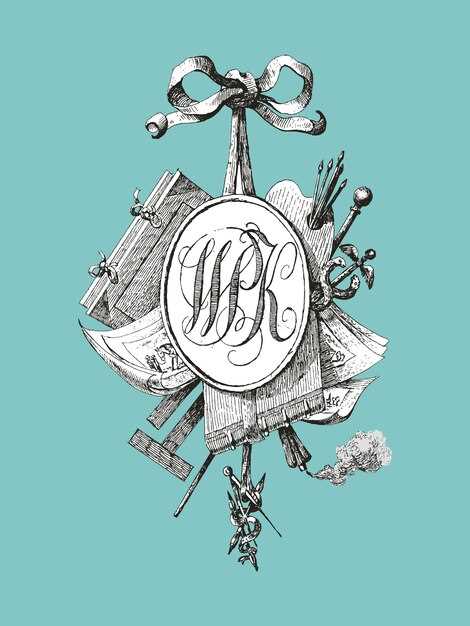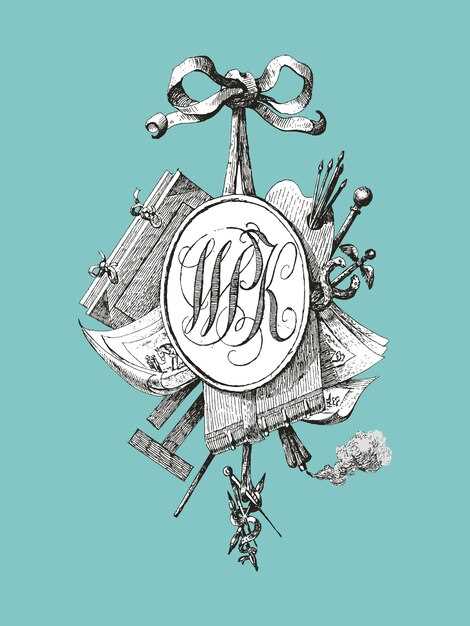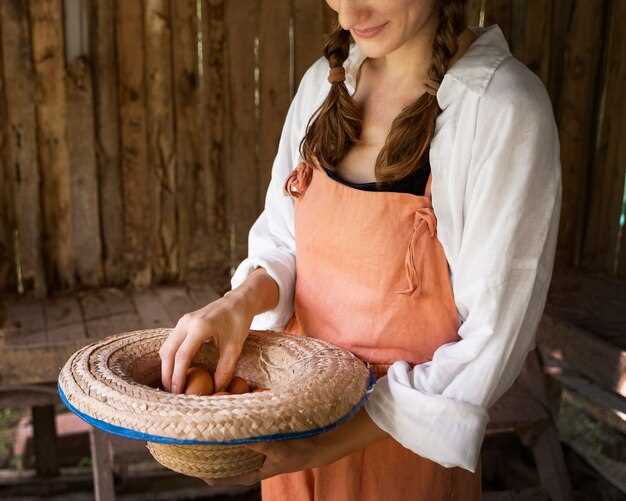Start your journey into medieval calligraphy by acquiring the right tools. The essential instruments you need are broad-edged pens and high-quality ink. A broad-edged pen allows for the creation of the thick and thin lines that characterize medieval scripts. Consider options like a dip pen or a fountain pen specifically designed for this purpose, as they offer precision and control.
Selecting the right paper is equally important. Opt for smooth, durable paper that can withstand multiple ink applications, as regular sheets may cause ink to feather or bleed. Modern calligraphy paper or traditional parchment-like sheets are ideal choices. They ensure that your work retains clarity and vividness.
Ink selection can significantly impact your calligraphy practice. Sumi ink or iron gall ink are excellent choices due to their deep intensity and historical accuracy. These inks provide a rich contrast and are suitable for replicating authentic medieval scripts. Always have a small container for diluting and mixing your inks, allowing you to achieve various shades and consistencies.
Having these essential tools on hand not only equips you to begin practicing medieval calligraphy but also ensures the authenticity of your work. Taking the time to select quality materials enhances both the learning experience and the final output, bringing a touch of the medieval era into your modern-day practice.
Medieval Calligraphy Basics

Choose the right paper to set a strong foundation for your calligraphy practice. Opt for high-quality parchment or vellum as these surfaces provide the texture and durability that are favorable for ink retention. Next, focus on your ink selection. Traditional inks made from oak galls or carbon black are perfect for achieving authentic medieval style.
- Quills: Craft your quill from a feather, preferably from a goose or swan. The right size and shape can significantly affect your writing style and comfort.
- Ink Preparation: Grind gall nuts with ferrous sulfate and gum arabic. Maintain the correct consistency for smooth ink flow, and store it in a tightly sealed container.
- Pens and Nibs: Apart from quills, experiment with reed pens or metal nibs if more modern convenience is needed. They offer a variety of stroke widths.
- Guidelines: Use a ruler and pencil to draft light guidelines ensuring consistent letter size and alignment.
- Practice Sheets: Warm up with practice sheets. Start with basic shapes and gradually progress to complete alphabets and words.
To enhance your skills, study ancient manuscripts to understand the nuances of letter forms and ornamentation. Practice consistently, paying attention to the rhythm and pressure of each stroke. Connecting with a community of calligraphers can provide support and inspiration, while expert feedback will help refine your technique.
Tools for Medieval Calligraphy
Choosing the right tools is the first step to mastering medieval calligraphy. Begin with a set of reliable pens tailored for calligraphy, including broad-edge pens and quills. A broad-edge pen offers the flexibility of nib sizes, making it suitable for various styles from Gothic to Uncial.
- Pens and Quills: Opt for steel nibs if you prefer durability and finer control. However, for authenticity, try using quills made from feathers which require a special technique and care.
- Ink: Use high-quality, lightfast inks available in various colors. Traditional black works well for most scripts, but experimenting with colored ink can enhance creativity.
- Parchment and Vellum: Although commonly available paper can be used for practice, real parchment or vellum elevates authenticity and adds a classic touch.
- Rulers and Measuring Tools: Precision is key in calligraphy. Utilize rulers and compasses for accurate line spacing and maintaining consistent angles.
- Light Box: A light box helps trace guidelines onto thicker papers, essential for beginners aiming for straight lines without visible pencil marks.
Experiment with these tools to understand their unique characteristics. Regular practice and adjustments will lead to smoother strokes, ultimately enhancing your calligraphic skills.
Selecting the Right Pens for Different Styles
Begin with a broad-edged pen for styles like Gothic or Uncial. These pens create the bold, dramatic strokes characteristic of these scripts. Brands like Pilot Parallel Pens or traditional broad-edge dip pens are excellent starting points. Opt for a nib width that complements the size of your lettering; a broader nib suits larger letters, while a narrower nib works best for smaller letters.
For more intricate scripts like Italic or Copperplate, a pointed pen or flexible nib is ideal. These pens allow you to control line variation, creating the thicks and thins that define these styles. Look for tools such as the Hunt 101 nib or Nikko G nib, which offer flexibility without compromising control. Ensure you have a quality holder that fits comfortably in your hand.
Modern calligraphy favors brush pens, which provide versatility and ease of use. Brands like Tombow Dual Brush Pens or Pentel Pocket Brush Pens are popular for their flexibility and vibrant ink flow. These tools cater to both flourishing scripts and bold, expressive lettering. Consider the size of the brush tip; smaller tips offer more precision, while larger tips allow for broader strokes.
Experiment with different ink types to enhance your work. While some pens come with pre-filled ink cartridges, others require separate ink which allows for customization. India ink, sumi ink, and acrylic inks each offer unique qualities that can elevate your calligraphy, so match the ink properties to the desired style and surface.
Remember to maintain your pens by cleaning them regularly. This prevents clogging and ensures smooth, consistent strokes. Properly storing them in a dry, safe place also prolongs their lifespan. The right tools enhance skill and creativity, so take the time to find pens that align with your calligraphy goals.
Understanding Different Types of Ink
Select ink based on surface compatibility and desired finish. The most common types include iron gall, carbon, and India ink, each offering unique qualities.
Iron gall ink, made from tannin and iron salts, provides a rich, deep black suitable for parchment. Be cautious; it can be corrosive over time if not used correctly.
Carbon ink, known for its permanence and dark pigment, uses soot grounded in a binding solution. It is excellent for longevity and use on paper but can smudge before it dries completely.
India ink, originating from ancient China, blends carbon with shellac. It creates a waterproof bond ideal for artists and offers consistent thickness, adapting well to brushes and dip pens.
For beginner calligraphers, India ink offers ease of use, while iron gall demands more experience due to its chemical nature. When deciding which to use, consider the type of work and how you want it to appear over time.
Choosing the Appropriate Parchment and Paper
For beginners in medieval calligraphy, selecting the right parchment or paper can significantly enhance the quality of your work. Start with understanding the difference between parchment and standard paper. Traditional parchment, often made from animal skin, provides a sturdy surface that is durable and absorbs ink well. This characteristic can help to mitigate ink blotting, making your letters sharp and clear. However, modern vellum, which mimics traditional parchment but is often plant-based, might be more accessible and cost-effective for practice.
If you choose to go with paper, ensure it’s heavyweight and has a smooth finish to accommodate calligraphy pens. Papers such as Bristol or hot press watercolor paper can offer the fine surface needed for intricate scripts. Also, consider acid-free options to prevent yellowing and deterioration over time, preserving the integrity of your work.
When selecting materials, test ink behavior on a small sample before committing. This simple step helps determine how well the ink adheres to the surface and whether it feathers or holds crisp lines. Remember, the goal is to match your writing style and ink with the right surface to achieve the best results. Prioritize comfort and functionality over cost, as the right choice of parchment or paper sets the foundation for all your calligraphy projects.
Additional Accessories: Rulers and Erasers
When practicing medieval calligraphy, incorporate a reliable ruler into your toolkit to ensure precise line alignment and consistent spacing. Opt for a metal-edged ruler, as it provides durability and a crisp edge for drawing clear, straight lines without risking the ruler’s wear over time. Consider a transparent ruler for a full view of your workspace, making it easier to maintain symmetry and alignment from draft to final piece.
An eraser also serves as an invaluable accessory in the calligrapher’s arsenal. Choose a soft, high-quality eraser to make clean corrections without damaging the paper. A kneaded eraser is particularly handy for gently lifting graphite from guidelines or outlines without leaving residue or smudges.
- Ruler: Invest in a metal-edged one for straight lines.
- Transparent Option: Helps maintain symmetry and ease in layout design.
- Eraser: Use a soft, high-quality option to avoid paper damage.
- Kneaded Eraser: Perfect for precise adjustments and residue-free usage.
These tools might seem minor but play a major role in achieving professional calligraphy results. Prioritize these accessories to elevate your craftsmanship, bringing precision and clarity to every letter and design.
Mastering Medieval Fonts and Techniques
Begin with patience and dedication as you explore medieval fonts and techniques. Start by familiarizing yourself with the basic styles like Gothic, Carolingian, and Uncial, which are fundamental in medieval calligraphy.
| Font Style | Characteristics | Techniques |
|---|---|---|
| Gothic | Narrow with sharp angles and dramatic contrast | Hold the pen at a steep angle, emphasize vertical strokes, and use compression in letters |
| Carolingian | Rounded and spaced, providing readability | Focus on rounded shapes and even spacing between characters |
| Uncial | Broad and rounded, with fewer ligatures | Use a slight tilt of the pen, employ consistent curves, and ensure balanced spacing |
Ensure that your workspace is well-lit and your tools, such as nibs and ink, are of good quality. Experiment with different nib sizes, as each will produce unique stroke widths and textures. Use a practice sheet divided into guidelines to maintain uniformity in letter height and slant.
Gradually adapt your hand to the required pressure and speed, practicing each letter with attention. Analyze historical examples of manuscripts for insight into authentic styles and to discover different decorative elements, like flourishes and embellishments, that are characteristic of medieval scripts. Engaging in this artistic practice will enrich your appreciation and competence in medieval calligraphy.
Identifying Distinctive Features of Gothic Script
Focus on the angularity of the letters. Gothic script, known for its sharp, angular strokes, distinguishes itself with pointed arches and diamond-shaped loops. Observe how the letters stand closely together, emphasizing verticality and compactness, a characteristic that makes the text appear dense.
Pay attention to the consistent use of vertical lines. In Gothic script, straight vertical lines, or minims, are prevalent and often dominate the main structure of letters like ‘n’, ‘m’, and ‘u’. These minims can create a rhythm in the writing, contributing to its uniformity and aesthetic appeal.
Notice the extensive use of ligatures. In order to save space and make the script more ornate, Gothic calligraphy frequently incorporates ligatures, where two or more letters are combined into a single symbol. This feature not only enhances the visual flow but also acts as a space-saving method in manuscripts.
Look for the boldness of the strokes. Typically, Gothic script uses thick strokes, achieved by applying significant pressure to the pen, resulting in a heavy, dramatic appearance. This weighty quality sets Gothic apart from more delicate scripts like Italic or Carolingian minuscule.
Observe the decorative elements. Often, Gothic script includes elaborate embellishments, particularly on capitals. These flourishes, sometimes extending into the margins of a page, add an intricate and ornate quality, reflecting the script’s historical use in religious texts and official documents.
Exploring the Uncial Font Characteristics
Uncial is a distinctive script with rounded, uniform letterforms, ideal for both beginners and seasoned calligraphers. Prioritize practicing the broad, horizontally oriented strokes, which are fundamental to achieving the characteristic elegance of this font.
The uniformity in letter height is a hallmark of Uncial. Most letters are designed to occupy the same height, creating a cohesive visual flow. This uniformity extends to the width of the letters, with each stroke maintaining a consistent thickness, typically achieved using a broad-edged pen held at a 30-degree angle.
Although Uncial lacks the ascenders and descenders common in other scripts, certain letters such as ‘b’, ‘d’, ‘h’, ‘k’, and ‘l’, still extend slightly above the general height. It’s vital to control these extensions subtly to maintain the visual balance.
Another key feature is the use of open-area forms, which allows for spaciousness and readability. Curved strokes dominate the design, creating the characteristic rounded forms. Exercise with circular strokes to master the gentle curves that define Uncial.
| Element | Characteristic |
|---|---|
| Stroke Angle | 30-degree |
| Letter Height | Uniform |
| Letter Width | Consistent |
| Ascenders/Descenders | Minimal and subtle |
| Stroke Style | Curved, broad-edged |
Focus on spacing between letters, a subtle but critical aspect to achieve clarity. In Uncial, the spacing needs to be slightly expanded to complement the roundness of the characters, allowing each letter to breathe while maintaining the text’s cohesion.
By dedicating attention to these Uncial characteristics, you’ll develop a stronger appreciation and proficiency for this unique medieval script. It embodies simplicity yet offers a depth of artistry in every stroke.
Practice Techniques for Consistent Letterforms
Develop your hand control by practicing basic strokes daily. Focus on vertical lines, horizontal lines, and ovals as foundational movements. Set aside 15 minutes each day to focus specifically on these strokes, ensuring smoothness and precision.
Use guidelines to maintain uniformity. Draw lines on your practice paper to define the x-height, ascender, and descender levels. This visual aid helps in creating letters of consistent height and alignment.
Engage in slow writing to enhance accuracy. Speed often leads to inaccuracies, so write each letter slowly, paying attention to its structure. This methodical approach helps imprint the correct form in your muscle memory.
Regularly practice the alphabet in groups. By focusing on similar letterforms together, such as c, e, and o, you can reinforce their structure and connect their creation in your mind. This grouping technique also highlights subtle differences and enhances your ability to differentiate and replicate various letter styles.
Review your work often by comparing your letters to well-crafted examples. Use printed samples or digital guides to identify areas for improvement. Mark inconsistencies and keep notes to track your progress over time, which helps in identifying patterns or recurring issues.
Incorporate muscle memory exercises. Use repetitive drills of letter sequences to transition smoothly between characters. Concentrate on forming connections between letters to build consistency in your calligraphy flow.
Finally, explore various nibs and tools. Each tool may produce different line qualities; by experimenting with different nib sizes or angles, you’ll discover techniques that suit your style and help maintain consistent letterforms.
Q&A:
What are the most commonly used tools in medieval calligraphy?
Medieval calligraphy primarily relied on a few essential tools, including the quill pen, ink, and parchment or vellum. The quill was often made from a bird feather, such as a goose or swan, and had to be carefully cut and maintained for writing. Ink was typically iron gall ink, made from oak galls and iron salts, which provided a deep, lasting color. Writers used parchment or vellum as writing surfaces, which were prepared animal skins that offer durability and a smooth texture for writing.
How does a quill pen differ from modern pens?
The quill pen, unlike modern pens, is a writing tool that is crafted from a feather. Its tip is shaped by cutting it to a specific angle, allowing for different line thicknesses in calligraphy. Unlike ballpoint or fountain pens, the quill pen does not have a reservoir for ink; instead, it has to be dipped into an ink well repeatedly. The stroke variability and the need for regular sharpening made it a tool that required skill and practice to master.
Can you describe the process of making ink for medieval calligraphy?
Creating ink in medieval times often involved a labor-intensive process. The most common type, iron gall ink, was made by fermenting oak galls, which are growths formed on oak trees due to insect activity. The galls were crushed and mixed with iron salts (such as iron sulfate) and gum arabic, which acted as a binder. This mixture was boiled and then filtered to remove impurities. The resulting ink was prized for its rich color and permanence on paper or parchment.
What types of surfaces did medieval scribes write on, and how were they prepared?
Medieval scribes primarily wrote on parchment or vellum, which were made from treated animal skins, usually from calves, sheep, or goats. The skin was first soaked in lime to remove hair and fat, then stretched on a frame while wet. Once dried, it was scrubbed and sanded to create a smooth surface for writing. This preparation process was crucial for ensuring that the ink adhered properly to the surface without blotting or running.
How did medieval scribes maintain their quill pens?
Maintaining a quill pen was an ongoing task for medieval scribes. The point of the quill required regular sharpening with a penknife to ensure that it produced the desired line width and allowed for smooth writing. The angle and cut of the nib could be adjusted to suit different styles of lettering. Additionally, scribes had to clean the feather to prevent ink buildup, which could affect the quill’s performance over time.




